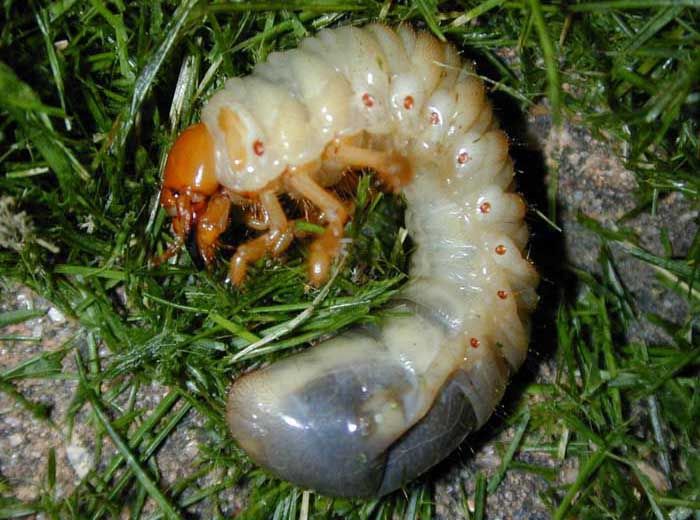
Scarab beetle larvae (chafer)
you will find these larvae buried in the ground
Morphological characteristics
Scarab beetle larvae with a homogeneous cylindrical body often bent in a C-shape, 3 pairs of large legs in the front of the body, large visible head of orange color, larva of the melolonthoid type (larva bent and white). This larva moves on the belly.
Life cycle
The development of the common cockchafer ( Melolontha melolontha ) takes place over 3 years. After hatching from the eggs in May/June the larva consumes dead organic matter and fungi before burrowing more than 60 cm into the ground to overwinter. In the second year, in May, it rises between 5 and 25 cm from the surface of the ground and feeds intensively on roots or tubers. In winter it buries itself again in the ground at a depth of more than 60 cm and comes out in the spring of the third year during which it feeds little and goes back down to depth to turn into an adult (pupation) which will come out in spring. of the following year. There are several species of beetles (Saint-Jean beetle, summer beetle and horticultural beetle).
Diet
The cockchafer larva consumes a lot of roots during the second year of its development.
regulators predators or
Cockchafer larvae are preyed upon by birds, hedgehogs and moles. Ants can regulate the beetle population by feeding on the eggs.
Habitats
The beetle larva spends its entire life in the ground, preferably in open environments such as gardens or fields.
Interests in the garden
The beetle larvae attract predators such as hedgehogs, birds, moles or bats which can also regulate other larvae and insect populations. If these predators are there, the beetle larvae cause little damage.
Did you know ?
Adult beetles have a short life expectancy of about a month, which gives them just enough time to fly off to eat some tree leaves and reproduce so that the females lay eggs again in the ground.





